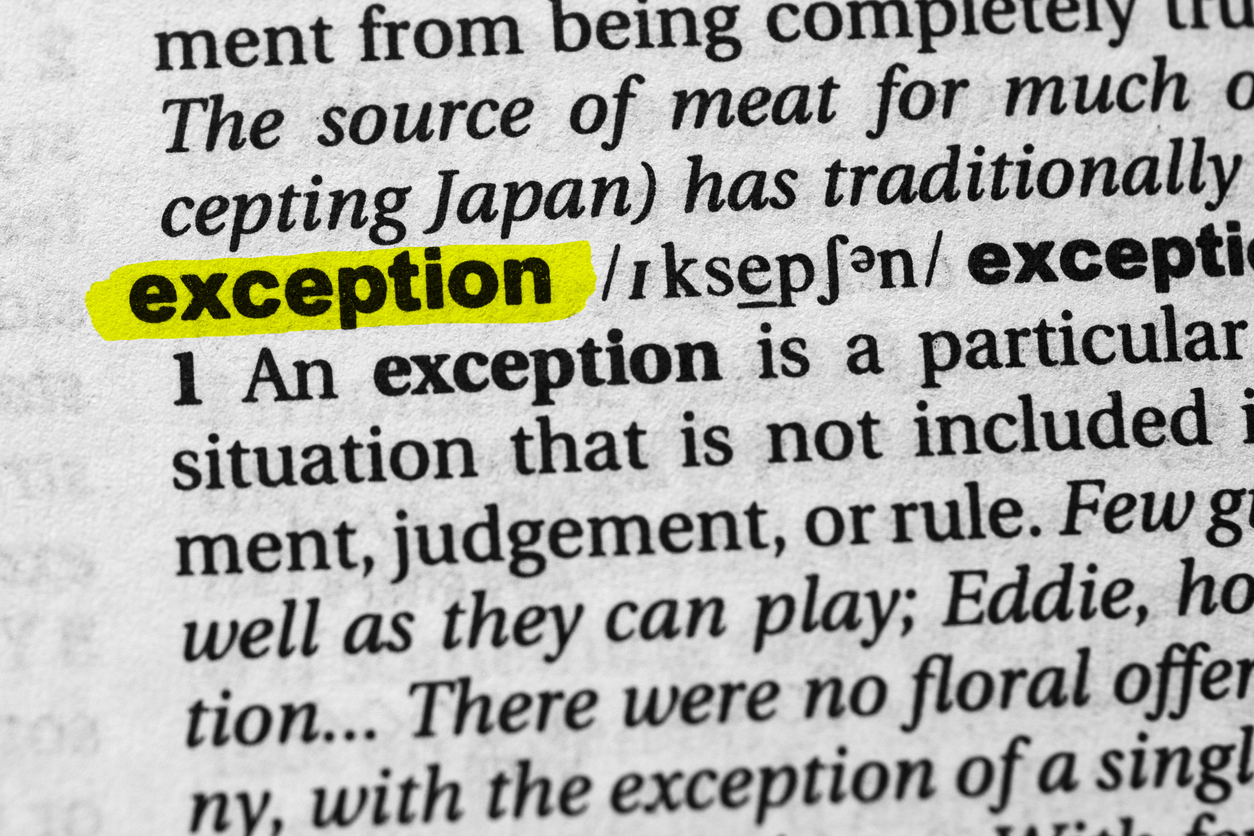To all my fellow property insurance coverage nerds, a recent appellate decision, 3534 East Cap Venture, LLC and McCullough Construction, LLC v. Westchester Fire Insurance Company and Endurance American Insurance Company,1 regarding ensuing loss is a “must read.” I suggest that a study of the underlying policyholder reply brief provides an excellent example of how to better argue for coverage when an ensuing loss is at issue.
The facts of the case indicated that 3534 East Cap Venture, LLC, a real estate developer, hired McCullough Construction, LLC to build a residential and retail complex in the District of Columbia. The defendants, Westchester Fire Insurance Company and Endurance American Insurance Company, issued identical builders risk insurance policies covering the building during construction. Both insurers were responsible for half of any qualifying losses under the policies.
During the construction, water damage occurred due to condensation. The architect’s plans failed to include a vapor barrier, which allowed humid air inside the building to reach cold, exterior-facing surfaces and condense into water. This resulted in water seeping into and damaging building materials like wood, insulation, and drywall. The builders had to replace the damaged materials, incurring costs of nearly $1.5 million.
The insured parties filed claims under their builders risk policies, which the insurers denied. Consequently, the insureds sued the insurers in the Superior Court of the District of Columbia. The case was removed to the federal district court based on diversity jurisdiction. The district court granted summary judgment in favor of the insurers, holding that the exclusions for losses caused by “dampness of atmosphere” and “changes in temperature” applied and that the ensuing loss exception did not apply.
The main issue on appeal was whether the insurance policies provided coverage for the water damage that occurred due to condensation. The policies explicitly excluded loss caused by “dampness of atmosphere” and “changes in temperature” but contained an ensuing-loss exception, which provided coverage if a loss “by an insured peril ensues.” The District of Columbia Circuit Court of Appeals held that the ensuing loss clause applied to the water damage caused by the excluded perils of dampness and temperature changes. The court reversed the district court’s decision and remanded the case with instructions to enter summary judgment for the insureds.
The court interpreted the insurance policies according to ordinary contract principles, consistent with ordinary speech, and construed ambiguities against the insurer.
The court found that while the policies excluded losses caused by dampness of atmosphere and changes in temperature, they covered losses resulting from water damage, provided an insured peril ensued. In this case, the water damage was considered an ensuing loss.
The court interpreted “ensue” in its ordinary sense, meaning “to occur or arise subsequently” or “to follow as a result.” Therefore, the water damage, which followed and resulted from the dampness and temperature changes, fell under the ensuing loss clause.
The court applied D.C. law, emphasizing that policy exclusions should be construed narrowly and any ambiguities resolved in favor of the insured. This supported the insureds’ interpretation that the water damage ensued from the excluded perils. The court also considered Maryland law, which closely informs D.C. common law, reinforcing the interpretation that ensuing loss clauses should provide coverage whenever an insured peril directly causes the loss, even if it was itself caused by an excluded peril.
In one of the finer reply policyholder briefs which I have read on this topic, the policyholder made the following initial argument in response to the insurance company:
The Brief (‘Insurers’ Br.’) of Appellees Westchester Fire Insurance Company and Endurance American Insurance Company (collectively, the ‘Insurers’) fails for multiple fundamental reasons. Among the most salient:
(1) The Insurers avoid their burden of proving that no reasonable person would interpret ‘dampness of atmosphere’ to refer to the air outside of a building only (the most common definition of ‘atmosphere’) and not to include the internal air within the building. Apart from embracing the Blaine dissent, they primarily rely on a secondary dictionary definition for ‘atmosphere’ to include interior air. That is not enough. Under the principal definition, ‘atmosphere’ is narrower than ‘air.’ A reasonable person could read the language and conclude that, by using a term that most commonly means external air enveloping the earth, and not using the broader term that means general air, whether internal or external, the narrower meaning was intended.
(2) The Policies expressly cover damage caused by ‘the accumulation of water from any source on a roof or other surface of a building, dwelling or structure.’ To exclude this expressly covered and plainly applicable peril, the ‘dampness of atmosphere’ exclusion must be equally clear, with the language construed narrowly in favor of the Insureds. Any ambiguity is fatal. This is an extremely high bar, and the Insurers fail to clear it–they do not show why no reasonable person would read the term ‘atmosphere’ so broadly that it necessarily includes a less common secondary meaning (interior air) and thus overrides the Policies’ express coverage for damage from accumulation of water.
(3) The Insurers fail to account for the self-evident fact that a reasonable person could read ‘accumulated water’ as referring to ‘condensation’ resulting from a design defect of the building and not to mere ‘dampness of atmosphere’ as the proximate cause of the damage. Water can accumulate by condensation without a damp atmosphere, as anyone who has ever had an iced beverage knows, and the parties acknowledged that the water accumulation at issue was caused by the defect (failure to include a vapor barrier). And it is equally undisputed that the installation of the vapor barrier cured the water problem–regardless of subsequent humidity or dampness of the atmosphere. Thus, the Insurers’ strident focus on the Insureds’ use of ‘condensation’ in their early arguments and ‘accumulation of water’ in their later arguments badly misses the mark. They both refer to the same covered peril and proximate cause of the damage at issue.
(4) The record of this case strongly supports the Insureds’ analysis. The parties stipulated as part of their cross-designations of undisputed material facts that the proximate cause of loss in this case was the vapor-barrier defect that caused the accumulation of water in the roof system from condensation. Accumulation of water in the roof system from condensation is an expressly covered peril (‘accumulation of water from any source’). Moreover, the Insurers’ assertions of undisputed fact confirm this cause. Their defense that the exclusion negates this coverage at most raises a factual dispute (whether ‘dampness of atmosphere’ also was the sole proximate cause of the harm) that must be resolved by trial, not by summary judgment–especially where the Insurers bear the burden of proving the exclusion’s applicability.
(5) Similar problems defeat the Insurers’ reliance on the ensuing-loss exceptions to the exclusions. They insist that the Policies exclude coverage for faulty work, see Insurers’ Br., p. 40, when in fact the Polices cover damages from faulty work and exclude only the costs incurred in fixing the defect. Again echoing the district court, they argue that the weather-based causes are ‘intertwined’ with the missing vapor barrier, so the exception does not apply and the exclusions control. Not only is that argument wrong as a factual matter–the Insureds did not seek coverage for any harm resulting from dampness of atmosphere or changes in temperature, proof positive that the sets of losses are not intertwined–but it is plainly incorrect as a matter of law. ‘Inextricably intertwined’ refers to the inseparability of damages where two causes, one unambiguously excluded and one covered, proximately result in the exact same damage. That is not the case here, where the water damage was caused by liquid water that accumulated due to a lack of a vapor barrier and dampness of the atmosphere caused no direct physical damages at all. The ensuing loss exception plainly applies because the damages claimed are distinct and separable.
The lesson from this case is that the Court of Appeals concluded the water damage to the building ensued from the excluded perils of dampness and temperature changes and thus was covered under the policies’ ensuing loss provision. The court’s decision emphasized and is a reminder of the importance of interpreting insurance policies in a manner consistent with ordinary language and resolving ambiguities in favor of coverage for the insured.
This case also highlights the nuanced interpretation of insurance policy exclusions in light of the significance of ensuing loss clauses. For policyholders, it serves as a reminder to carefully review policy terms and seek coverage where losses, even if initially excluded, lead to ensuing insured perils.
When searching the topic of ensuing loss clause in this blog, there were 39 prior posts on the topic. I suggest that public adjusters subscribe to FC&S and IRMI for interpretation of these clauses, as noted in Defective Construction and Ensuing Loss Provisions.
I often refer to ensuing loss clauses as “Lazarus clauses,” as noted in Water Loss Denied? Ensuing Loss Provisions May Provide Coverage:
‘Ensuing loss’ provisions are the ‘Lazarus’ clauses in property insurance policies. Property damage claims otherwise excluded from coverage, are raised from the dead and paid as a result of them. They are difficult to understand and the court decisions seem inconsistent. However, when there seems to be an event that is excluded, many times a water damage event, these clauses are often the only means of recovery.
If you are a true coverage nerd and still reading this far into this post, I finally suggest a fun study of the ensuing loss provision by reading a post I wrote 13 years ago on the topic, Whipped Cream, Honey and Covered Ensuing Loss Delights. The bottom line from reading and studying these clauses, prior posts on the topic, and this case is finding that there is a lot of coverage, which is often overlooked by a thorough understanding of the ensuing loss provisions of property insurance policies.
Thought For The Day
Those who are excellent at what they do have a superior commitment to ongoing education and lifelong learning. They never stop improving and honing their skills.
—Brian Tracy
1 3534 East Cap Venture, LLC v. Westchester Fire Ins. Co., — F.4th —, 2024 WL 3076909 (D.C. Cir. June 21, 2024).




